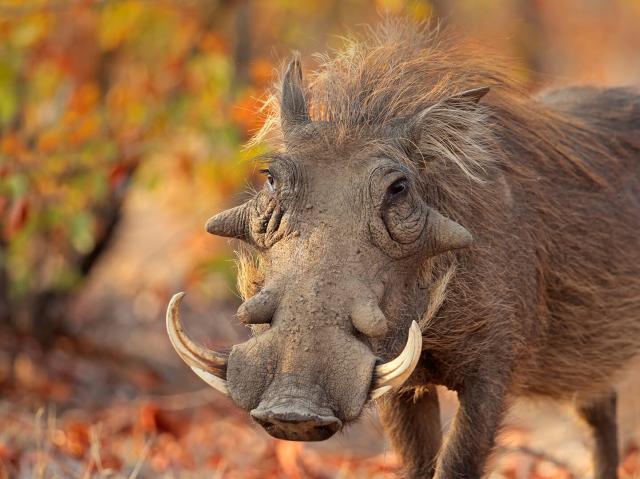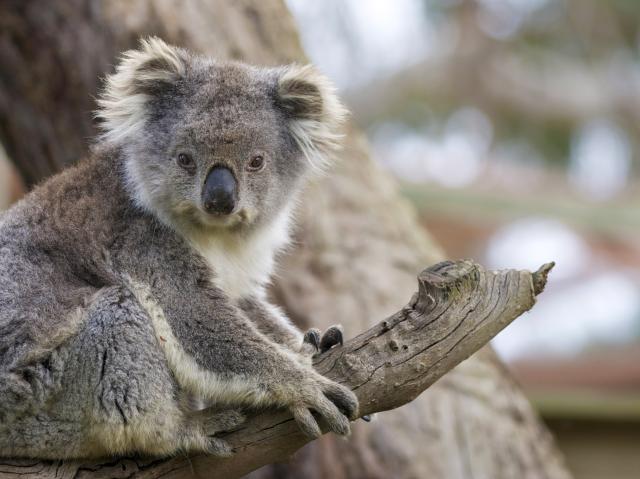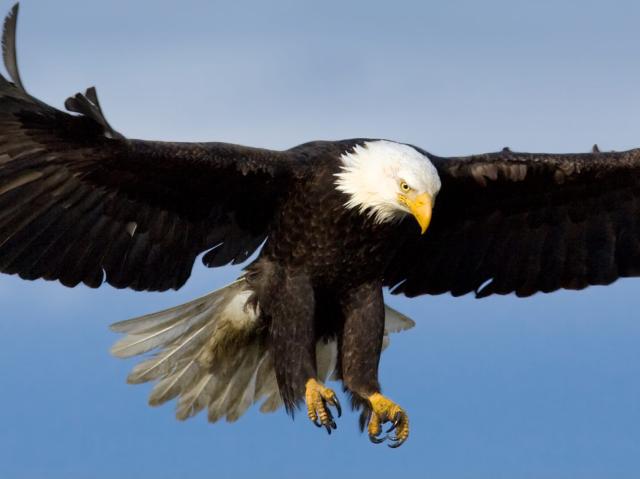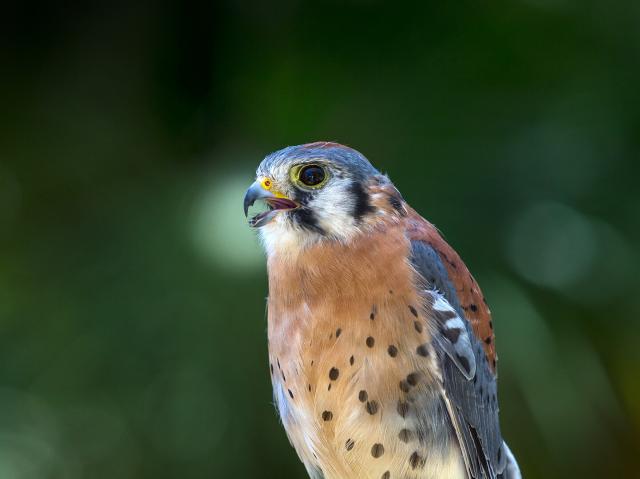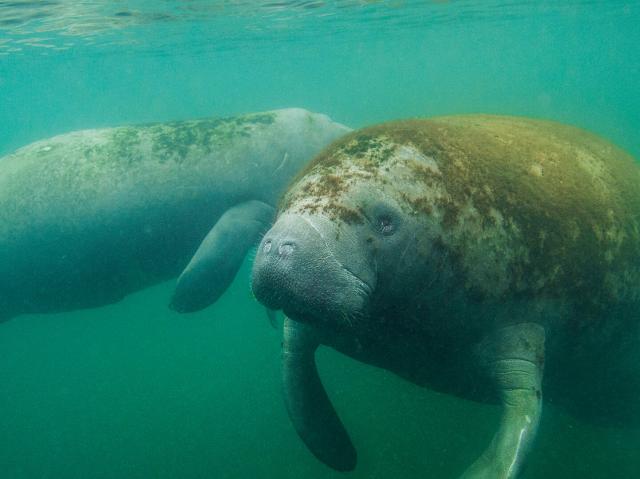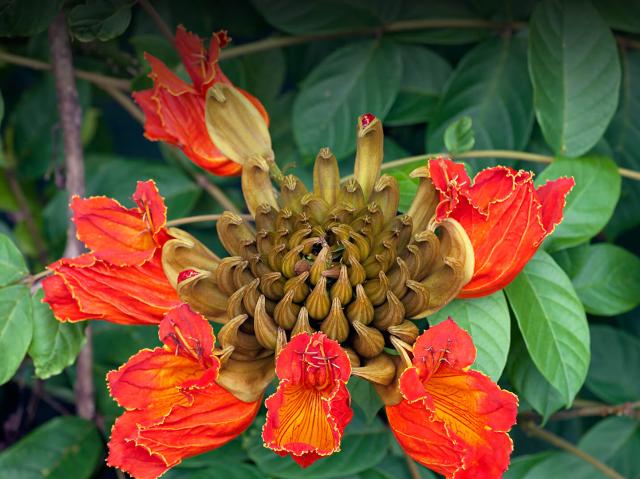
Frog and Toad

- CLASS: Amphibia (Amphibians)
- ORDER: Anura
- FAMILIES: 27
- GENERA: At least 303 known
- SPECIES: About 4,000 known

ABOUT
Frogs are fascinating! The world holds a wonderful variety of frog species, each adapted to living in its unique habitat, be it cool mountain slopes, scorching deserts, or tropical rainforests. Depending on the species, they may be found in water, on land, or in trees, and come in many sizes and colors.
Frog or toad? Frogs often have long legs that are good for hopping, skin that is smooth and moist, and special pads on their toes that help them climb. Toads, on the other hand, are more heavyset with shorter legs, and usually have drier skin, often with warty-looking bumps. Frogs are more likely to live in or near water than toads. The word "frog" can include both frogs and toads, as some frogs may not live near water and some toads have smooth skin.
Can you get warts from holding a toad? No! But you can die from holding a frog—if it's a poison frog! Some of these bright little South American frogs are so toxic that one drop of their skin secretions can kill an adult human. But don’t worry: these toxins would need to enter the bloodstream to cause us harm, and additionally, the poison frogs in managed care are typically non-toxic. This is because they don’t eat the poisonous insects found in the wilderness that these frogs require to produce the toxins that make them so deadly.
When you look at a frog or a toad, you'll notice that it doesn't seem to have a neck. Practically speaking, this is true. Most frog and toad species have large, protruding eyes so they can see in most directions. They can also hop around to look in another direction. But they can't turn their head like we can, since their neck is almost non-existent.
Adult frogs and toads have two main color schemes. Each one signals a different survival technique. Those with bright colors (like poison frogs) advertise their presence and warn potential predators that their skin is toxic. Those with mottled green or brown colors are camouflaged so predators have a hard time finding them. Some species employ both strategies, such as the Oriental fire-bellied toad, which is green on top but red on the bottom. When disturbed, these toads bend upward to display their red belly and warn predators of their toxic skin.
Toads have additional survival techniques as well. If a predator is after a toad, the toad can puff itself up so it looks too big to swallow. Most toads can also secrete a burning milky toxin from a gland, called the parotoid gland, behind their eyes!
Most frogs and toads are great at hopping any which way. Powerful muscles in a frog’s back legs give it distance while pushing off from whatever surfaces it’s leaping from. Generally, the longer the frog’s back legs are, the farther it can hop. Hopping is a great way to escape from danger quickly. Some frogs prefer to walk or run rather than hop, especially those living in grasslands, and aquatic frogs use their swimming skills to make a quick getaway.
HABITAT AND DIET
Frogs and toads are found in nearly every type of habitat, almost everywhere on Earth except Antarctica. Frogs don’t have fur, feathers, or scales on their skin. Instead, they have a moist and permeable skin layer covered with mucous glands; this allows them to breathe through their skin in addition to their lungs. They can also absorb water through wet surfaces and are vulnerable to water loss through the skin in dry conditions. The thin layer of mucous keeps the skin moist and protects it from scratches.
Frogs need fresh water for their skin, so most live in aquatic or swampy habitats. There are always exceptions, though: the Australian water-holding frog is a desert dweller that burrows deep into the ground to keep from drying out. The waxy tree frog, found in the arid Gran Chaco of South America, produces a waxy substance that it rubs all over its skin to prevent evaporation.
Most frogs and toads eat insects, spiders, worms, and slugs. Some of the larger species chow down on mice, birds, and even other small reptiles and amphibians.
Frogs and toads are responsible for keeping a large part of the world's insect population under control. In some cases, however, their appetites can be a problem. Latin American cane toads were introduced to Australia in 1935 to kill sugarcane beetles. But instead of beetles, the toads preferred to eat native frogs, small marsupials, and snakes. Not only that, but they poisoned everything that tried to eat them, including rare animals like Tasmanian devils and pet dogs! Since cane toads lay more than 50,000 eggs at a time, they turned into bigger pests than the beetles they were supposed to get rid of.
FAMILY LIFE
A ribbeting chorus: Have you ever walked past a pond or creek at night and heard lots of frogs croaking and ribbeting like a giant froggy chorus? It's likely you're hearing male frogs making calls to attract females. Each frog species has a different call that is used to attract mates and warn off rivals. When a female picks a male whose call she likes, the male grabs her and she releases her eggs. Then he fertilizes the eggs and, in some species, also guards them.
When is a fish not a fish? When it's a tadpole! Most frogs and toads start life in the water. The mother lays her eggs in water, or at least in a moist place like a dew-collecting leaf or plant. The eggs hatch into tadpoles (also known as pollywogs) that have gills and a tail like as fish but a round head. Most tadpoles eat algae, plants, and decaying organic matter, but some species are carnivorous and may eat tadpoles of their own or different species. Tadpoles gradually grow legs, absorb their tails, lose their gills, and turn into frogs and toads that start breathing air and hopping. This whole transformation is called metamorphosis.
In many species of frog it is the father that cares for the eggs. He may transport the eggs to a safe, wet place by putting them on his back, in a pouch on his belly, or even in his mouth. Or he may wait until the eggs hatch into tadpoles before he transports them from a wet place on land to actual water. Although the father is more likely to perform these tasks, the mother often does, too. Sometimes both parents do the babysitting—it just depends on the species.
Surinam toads have a unique way of caring for their offspring. Once the female lays eggs, the male frog holds on to her and pushes the fertilized eggs on her back, where they are absorbed into the spongy skin. This provides a protective layer for the larvae to develop. After three to four months, the now fully developed frogs emerge by popping out of the mother’s back!
The Australian gastric-brooding frog had one of the weirdest ways to care for eggs. The female ate as many as 20 eggs after the male fertilized them; she then stopped eating regular food because the eggs were developing in her stomach! When they began to turn into tadpoles, she vomited them up and started eating again! Sadly, this species has not been seen in the wilderness since 1981.
CONSERVATION
The world is currently facing an amphibian extinction crisis, with 33% of the world’s amphibians threatened with extinction. In the 1980s, scientists began getting reports from all over the world about disappearing amphibian populations, even in protected areas! Amphibian extinctions are alarming, as these animals play a critical role in their ecosystems. For example, imagine what could happen if frogs weren’t around to eat insects!
The loss of wetlands and other frog habitat because of industry and human population growth is one of the biggest causes of amphibian decline. The increase of roads has been hard on migrating frogs, too. When frogs try to cross a highway to get to their breeding pools, cars squash many of them. Nonnative species like trout and even other frogs that humans introduce often eat all the native frogs. There are also pollutants that get into the rivers and ponds and kill the frogs and tadpoles.
An emerging disease called chytrid fungus is causing severe declines in many frog populations. The fungus lives in water, so frogs are easily infected, and it covers their thin skin so the frog can’t breathe or get water. It also affects larvae and tadpoles, growing on their mouth parts and preventing them from eating. But its impact is not limited to wild frogs, because maintaining healthy zoo populations is also essential for conservation programs. Amphibians in managed care that are free of disease have a much higher survival rate and have less risk of exposing wild populations to disease during reintroduction efforts.
San Diego Zoo Wildlife Alliance has long supported the Panama Amphibian Rescue and Conservation Project to save frogs through biosecurity consultation and education, providing disease testing to over 80 zoos nationwide. We have developed disease-control guidelines for a variety of endangered amphibians, including the Kihansi spray toad, a species from Tanzania that currently exists only in zoos. In Central and South America, 60 amphibian species have been rescued and are being maintained in safe survival-assurance colonies until a time when it is safe to return them to their habitat. Twelve of the most at-risk species have now reproduced in managed care, including the horned marsupial frog, crowned tree frog, and Limos harlequin frog.
In Ecuador, which is third only to Colombia and Brazil for having the greatest number of amphibian species, an amphibian conservation program called Balsa de los Sapos (Life Raft of the Frogs) is now establishing breeding colonies for safekeeping, creating assurance colonies as a safety net for vulnerable frog species. San Diego Zoo Wildlife Alliance works with its staff to help keep this valuable population of amphibians healthy and sustainable by providing disease-screening services. Assisting in coordination of activities and providing educational resources is the Amphibian Ark, a joint effort of the World Association of Zoos and Aquariums and the International Union for Conservation of Nature.
Closer to home, and once abundant in the mountain ranges of Southern California, the mountain yellow-legged frog Rana muscosa is now critically endangered. Multiple factors have contributed to the decline of the species, including habitat loss, drought, introduced predators, pollution, and chytridiomycosis. San Diego Zoo Wildlife Alliance is working to restore the ecosystem balance in the San Jacinto Mountains through our managed breeding and reintroduction efforts for the mountain yellow-legged frog. Since 2010, we have successfully reintroduced zoo-bred mountain yellow-legged frog tadpoles into the wilderness at Hall Canyon on the University of California’s James San Jacinto Mountains Reserve, where the frogs had been extinct for more than 40 years. Radio transmitters in frog-sized backpacks have revealed a healthy 95% survival rate the first month and they are now breeding in the wilderness!
This effort required the collaboration of many groups, including the U.S. Forest Service, U.S. Fish and Wildlife Service, California Department of Fish and Wildlife, U.S. Geological Survey, and the University of California Natural Reserve System. The ultimate goal of this project is to re-establish stable populations of mountain yellow-legged frogs in their historic range, the mountain streams of Southern California.
San Diego Zoo Wildlife Alliance is also gearing up to establish and freeze amphibian cell cultures to help conserve the genetic diversity of frog and toad species. We’re hoping to team up with other zoos and conservation scientists to collect additional amphibian samples to increase our genome bank.
With more than 6,000 frogs, toads, newts, salamanders, and caecilians worldwide, there’s a lot to learn. Pick up a book, hop around the Internet, watch your favorite animal television show, or visit the San Diego Zoo to discover how great amphibians are. Prime amphibian real estate includes hiding places like leaf litter, rocks, and logs, a source of clean water, and insects to eat. Creating a well-kept and water-wise backyard pond makes a great family project! Do your part to keep garbage, chemicals, and nonnative plants and animals out of the natural environment to protect amphibian species from pollution and predation. Discourage your canine and feline family members from pestering wildlife. Curious cats and digging dogs cause a lot of stress for frightened amphibians. If you come across an amphibian, look, listen, and leave it where it is!
By supporting San Diego Zoo Wildlife Alliance, you are our ally in saving and protecting wildlife worldwide.
Sounds
LIFE SPAN
1 to 30 years, depending on species
YOUNG
Number of eggs laid: 2 to more than 50,000, depending on species
Incubation period: 14 to 23 days, although some hatch in less time (as little as 48 hours)
Age of maturity: 2 months to 3 years; some frogs in colder climates take longer to mature
SIZE
Length: Largest, Goliath frog Conraua goliath, 13.5 inches (30 centimeters); smallest, gold frog Psyllophryne didactyla, .39 inches (1 centimeter)
Weight: Up to 6.6 pounds (3 kilogrtams) for Goilath frog, but most frogs weigh less than 7 ounces (200 grams)
FUN FACTS
Frog ears are called tympanums and look more like a flat, disc-shaped patch of skin directly adjacent to each eye.
Wood frogs have a component in their blood that allows it to work like antifreeze, enabling the frogs to hibernate in a frozen state during cold weather and then “thaw” as the weather warms up.
While most frogs metamorphose in a few months, the mountain yellow-legged frog takes at least two seasons to morph, due to the cold temperatures and short summer “growing” season where it lives.
The glands behind the eyes of the smooth-sided toad produce powerful toxins that kill anything that tries to eat them.
Waxy tree frogs don’t hop but walk like a chameleon, using opposable first fingers and toes to grip branches.
Spadefoot toads can act as amphibian weather forecasters. Before a rainstorm, they come out by the hundreds to croak something that sounds like, "rain-today, rain-today." People living nearby know to expect a storm.
Horny toads are not really toads at all—they're lizards.
African frogs are the best jumpers of the frog world. They can hop 14 feet (4.2 meters) in a single bound.



